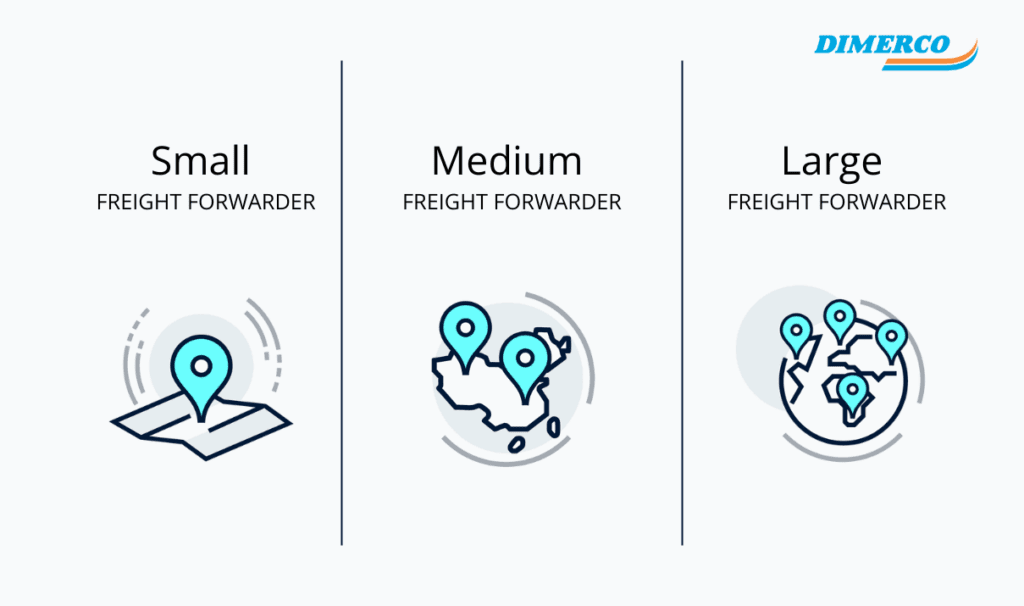If you’ve ever tried to shortlist a freight forwarder for your US operations, you know the challenge. Search online and you’ll find thousands of options, many offering the same promises: reliable service, global reach, competitive rates. But dig a little deeper, and things get complicated fast.
The reality is, not all forwarders are built the same. And what looks good on paper — the largest network, the lowest rate, the most awards — might not help you when your factory schedules shift overnight or your team can’t get a straight answer on a delayed shipment.
So, how do you find the right fit in a sea of lookalikes? Start by asking the right questions — the kind that separate marketing claims from true capability.
Misconceptions That Lead to Mismatched Freight Partners
One of the biggest misconceptions in the US freight market is the idea that size equals strength. Many shippers assume the largest providers are the safest choice. But in reality, large forwarders are often optimized for scale, not responsiveness. Their systems are built for volume, not for agility.
This becomes a problem when plans change — and in logistics, plans always change. A rigid partner may not be able to react quickly. What you actually need is a forwarder that understands your lanes, your delivery expectations, and your operational quirks. A partner with strong regional networks and fast decision-making at the local level.

To make sense of your options, it can help to understand the typical strengths and limitations of small, medium, and large freight forwarders:
- Small forwarders can be highly responsive and offer personal service, but they may struggle with capacity in volatile markets.
- Large forwarders have buying power and global coverage, but often lack the speed or flexibility to adapt when plans change.
- Medium-sized forwarders — like Dimerco — strike a balance. They bring global reach, strong capacity relationships, and the ability to move quickly when customers need answers fast.
What Shippers Think They Need vs. What They Really Value
During the RFP process, cost and capacity dominate. And that’s understandable. Rates and space matter, especially in high-volume, Asia-to-US trade lanes. But once operations begin, a different set of priorities takes over.
Logistics managers quickly realize that visibility, service consistency, and proactive communication are just as critical as pricing. When a shipment is delayed, they need answers immediately. When a new order comes in late, they need someone who can adjust fast, not a helpdesk ticket.
The forwarders who stand out aren’t necessarily the cheapest. They’re the ones who bring you timely updates, who flag problems before you even know there’s an issue, and who act like an extension of your team.
Choosing a USA Freight Forwarder
Rates and capacity matter, but what sets the best forwarders apart is reliable service, clear communication, and the flexibility to adapt when plans change. Use the table below to focus on what really drives performance when supply chains get complex.
| Primary Criterion | Considerations |
|---|---|
| Reliable Capacity |
|
| Competitive Rates |
|
| Flexibility |
|
| Visibility and Control |
|
Common Mistakes in Freight Forwarder Selection
A frequent misstep is treating the RFP like a pure numbers game. If you’re comparing quotes without looking at escalation paths or responsiveness, you’re taking a big risk. Service-level agreements are important, but so is asking: “What happens when things don’t go according to plan?”
Shippers that skip this step often find themselves locked into a contract with a provider that can’t adjust quickly. You might end up paying more in downstream costs — late fees, production delays, lost customers — than you saved on the front end.
Different Expectations by Region
Expectations vary depending on which US coast you’re operating from. On the West Coast, especially in ports like LA and Long Beach, companies prioritize speed, Asia-Pacific import experience, and customs fluency. On the East Coast, shippers often need inland flexibility and intermodal options to serve Midwest hubs and European trade.
Dimerco supports both. We’ve built strong West Coast capacity using our owned Asia offices and airline relationships. On the East Coast, we’ve invested in strategic partnerships that provide end-to-end support, including inland and final-mile logistics.
Why Capacity Alone Isn’t Enough
In tight markets, getting space at a fair rate is critical. But without reliability, capacity alone doesn’t solve your problem. Shippers working with Dimerco often tell us they came for the rates but stayed for the service. Because we operate over 130 owned offices in Asia and service hubs across the US, we can deliver both.
Our customers rely on us for international air and ocean freight, customs clearance, warehousing, cross-border service to Mexico, and real-time shipment visibility — all connected through our MyDimerco platform. You’ll always know where your freight is and how it’s performing.
What Sets Dimerco Apart
We’re driven by performance, not by scale. Our flat structure means faster decisions. Our local teams are empowered to act. Our customers don’t get routed through layers of bureaucracy when they need support.
For companies sourcing from Asia and distributing across North America, that agility makes a real difference. It’s why we’ve been a go-to partner for mid-sized and large enterprises alike.
And we’re evolving alongside you. From digitized visibility tools to expanded inland US and cross-border Mexico services, we’re staying ahead of trends like nearshoring and supply chain decentralization.
What the Right Freight Partner Actually Looks Like
Choosing a USA freight forwarder isn’t about checking boxes. It’s about fit — with your freight lanes, your internal team, and your long-term goals. If you’re looking for a partner that combines capacity with flexibility, and price with responsiveness, Dimerco is built for your kind of supply chain.
Ready to talk about your freight strategy? Contact us today and let’s get started.
